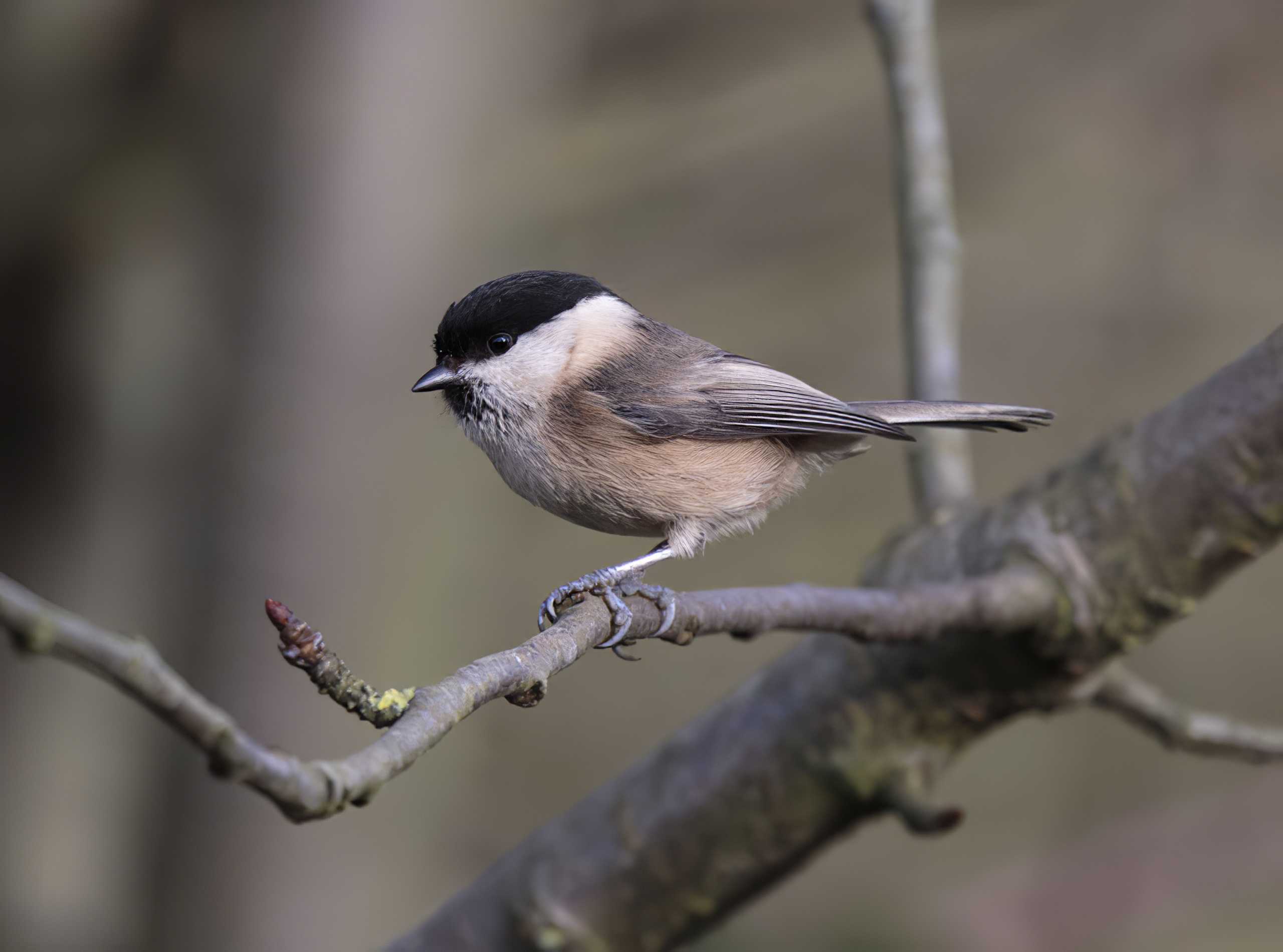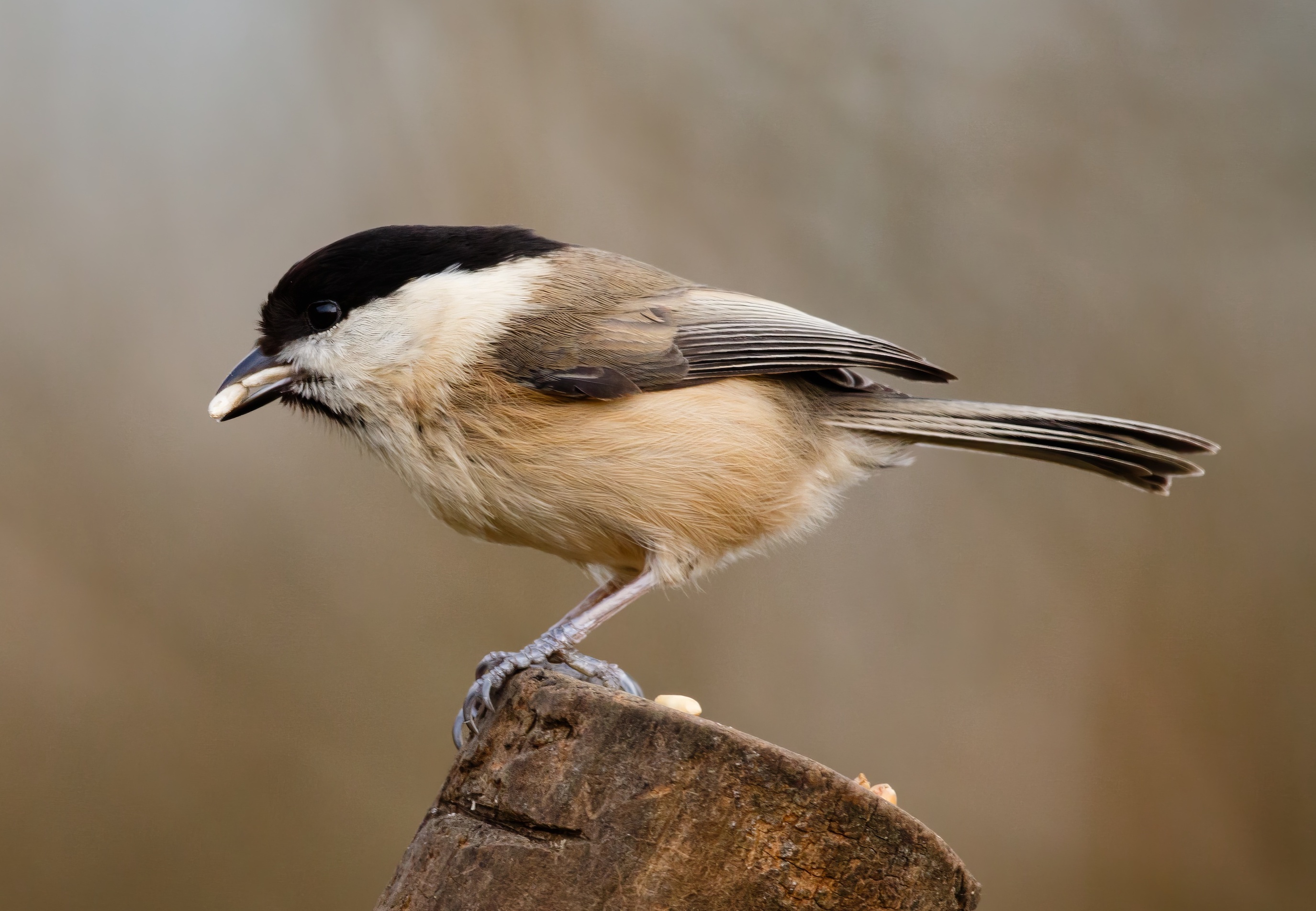Willow Tit Poecile montana
Once common and widespread, now seriously declining and scarce.


The Atlas through the 1980s found Willow Tit confirmed or probably breeding in 58 x 10km squares in the county and the population was estimated at 400 pairs. The BTO Atlas 2007-2011 showed it had been lost from 26 squares mainly in the south and east and was found in only 22 x 10km squares. RBBP records show an average of 22 pairs per year bred during the period 2013-2017and LBR reports records now come from only 8-12 sites per year. This 95% crash which is ongoing, is the severest decline experienced by any formerly common resident bird in the county in the last 30 years. The reasons are not fully understood but may include lack of scrub habitat with rotting willow, birch or hawthorn branches/stumps which meet critical nest hole excavation requirements; predation of nestlings by Great Spotted Woodpecker, Dendrocopos major; and competition from the commoner tit species driving them from their excavated nest holes. Willow Tits continue to do well in the river valleys of South and West Yorkshire only 25 miles to the west of northwest Lincolnshire but there is little evidence so far of dispersion in this direction that would augment our rapidly depleting population. The Willow Tit race in Britain, P.m. kleinschmidti is endemic and saving it should be a top priority. National surveys were organised by RSPB in 2019/20 and have been extended into 2021 to try and understand what can be done to stem and hopefully reverse the decline.
(Account as per new Birds of Lincolnshire (2021), included October 2022)
